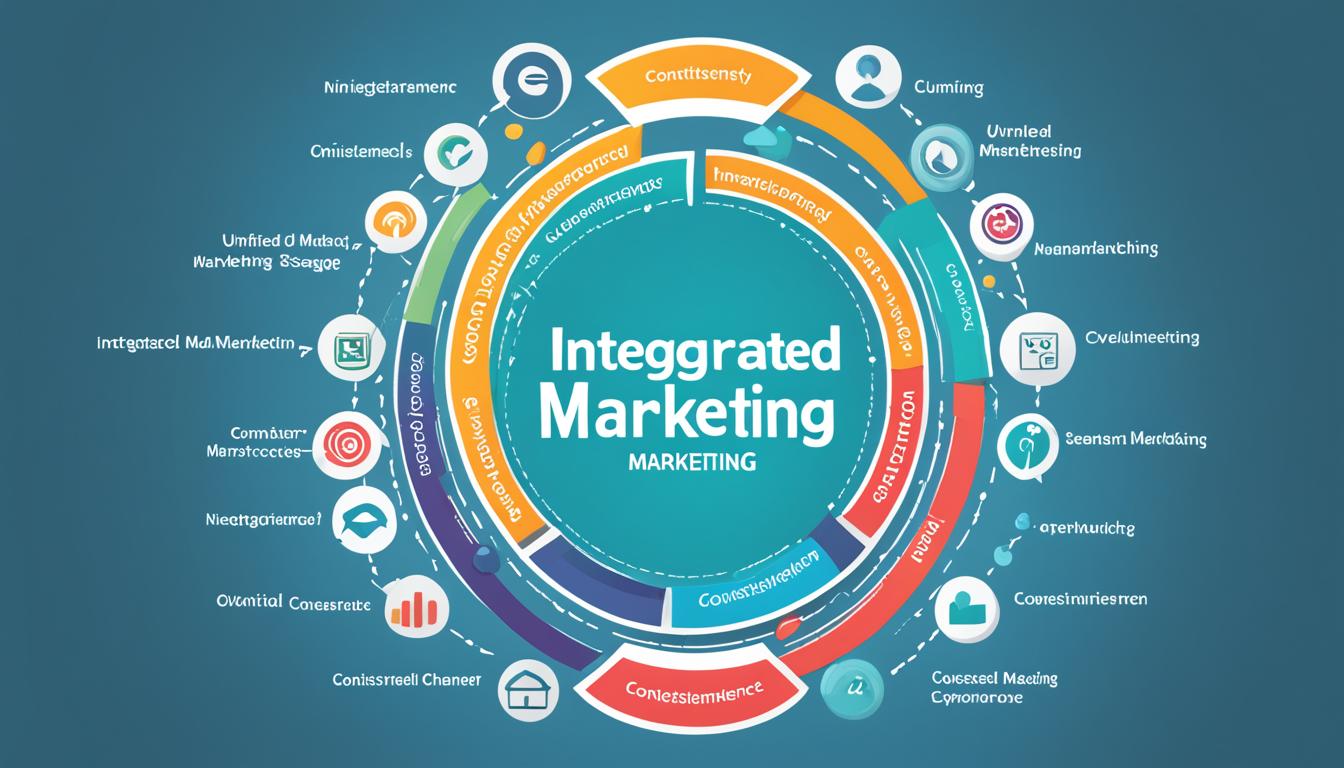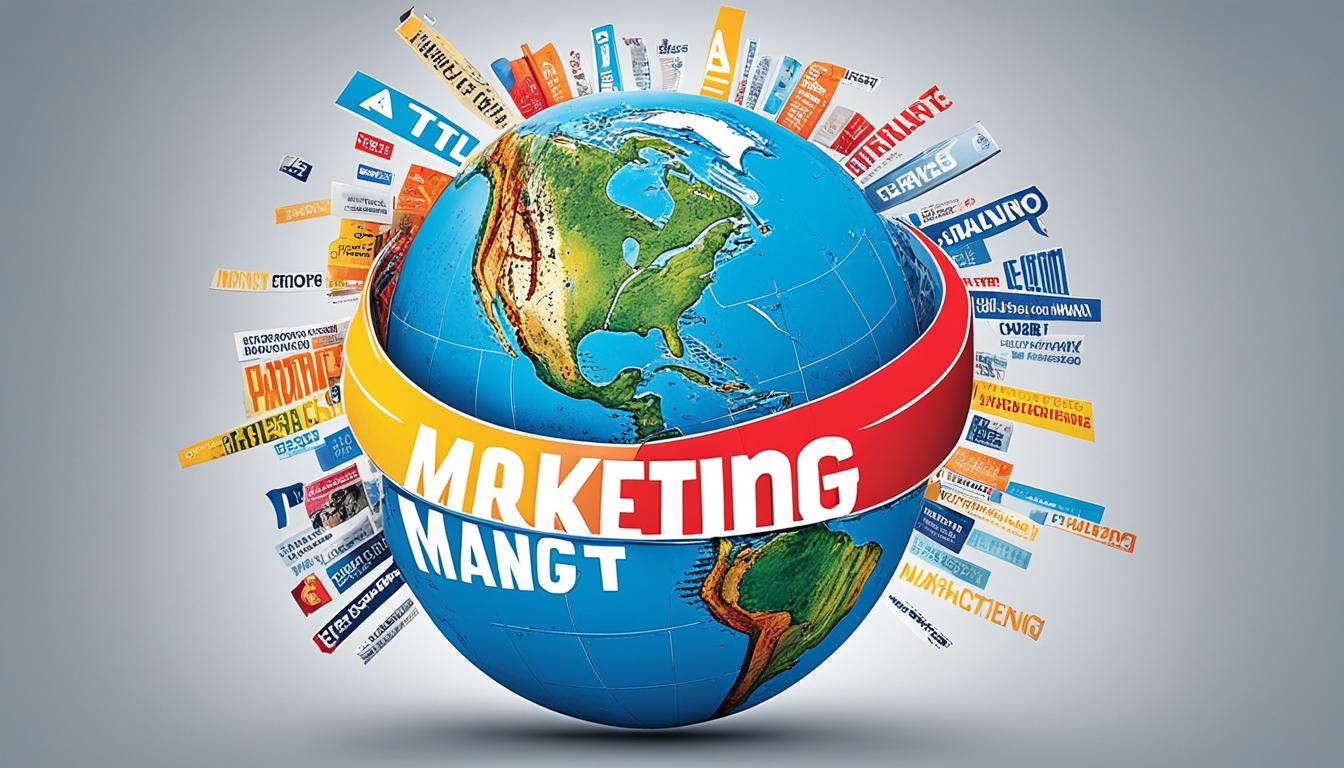Navigating the dynamic landscape of marketing involves understanding the fundamental distinctions between online and offline strategies. This comprehensive guide aims to unravel the nuances of these two realms, shedding light on the unique attributes and strategic considerations that define online and offline marketing. Businesses must grasp the diverse tools at their disposal, from digital platforms’ omnipresence in online marketing to the tangible, traditional roots of offline marketing. This exploration will empower marketers to craft integrated campaigns and leverage the strengths of both domains for a comprehensive and effective marketing approach.
Key Takeaways:
- Online marketing encompasses various digital strategies such as SEO, social media marketing, email marketing, and display advertisements.
- Online marketing offers a wider reach, lower costs, targeted advertising, and real-time analytics for tracking campaign success.
- Offline marketing utilizes traditional advertising methods like print ads, television, and direct mail to target local audiences.
- Offline marketing builds trust and strong relationships through personal interaction but comes with higher costs and limited reach.
- Combining online and offline marketing strategies results in the most effective and comprehensive marketing campaigns.
Understanding Digital Dominance: Online Marketing
Online marketing, also known as digital marketing, encompasses a range of strategies and channels to promote products or services. This includes search engine optimization (SEO), social media marketing, email marketing, and display advertisements. The benefits of online marketing include a wider reach, lower costs, targeted advertising, and real-time analytics to track and measure the success of campaigns.
With online advertising spending projected to surpass traditional advertising by 2024, it’s clear that online marketing is a crucial component in today’s digital landscape. However, there are also some challenges to consider when implementing online marketing strategies.
Drawbacks of Online Marketing
- Technical Skills Required: Online marketing often requires a certain level of technical expertise to effectively utilize digital platforms and tools.
- Increasing Competition: As more businesses embrace online marketing, competition for digital visibility and customer attention intensifies.
- Challenges in Building Trust: Establishing trust online can be more challenging compared to face-to-face interactions in offline marketing.
- Potential for Information Overload: With the vast amount of information available online, capturing and retaining audience attention can be difficult.
Despite these challenges, online marketing remains a powerful strategy for businesses to connect with their target audience, drive engagement, and achieve measurable results.
In the next section, we’ll explore the tangible experiences and personal interactions offered by offline marketing in contrast to the digital dominance of online marketing.
SEO
SEO stands for Search Engine Optimization. It involves optimizing a website’s content, structure, and technical aspects to improve its visibility on search engine results pages. By implementing SEO best practices, businesses can increase organic traffic to their website and enhance their online presence.
| Benefits of Online Marketing | Drawbacks of Online Marketing |
|---|---|
|
|
Embracing Tangibility in Offline Marketing
Offline marketing, also known as traditional marketing, utilizes traditional advertising methods and offline promotional techniques to reach the target audience. Unlike online marketing, offline marketing does not rely on digital platforms and instead focuses on tangible touchpoints. Traditional marketing channels such as print ads, television, radio, and direct mail are used to create brand awareness and engage with customers on a personal level.
Offline marketing strategies are particularly effective in building trust and establishing strong relationships with the target audience through face-to-face interactions. These methods allow businesses to convey their brand message in a tangible way, leaving a lasting impression on consumers.
However, offline marketing does have its limitations. Higher costs, limited reach, and the lack of real-time data are some of the drawbacks associated with traditional marketing channels. Tracking the return on investment (ROI) of offline marketing campaigns can be challenging without access to real-time analytics. Despite these challenges, offline marketing still holds significant value, especially for businesses targeting a local audience and industries where personal interaction is crucial.
By combining both online and offline marketing strategies, businesses can create comprehensive and effective marketing campaigns. Integrating traditional marketing channels with digital platforms allows for a wider reach, enhanced brand visibility, and a more holistic approach to marketing.
Benefits of Offline Marketing:
- Building trust with personal interactions
- Establishing strong relationships with the target audience
- Tangible brand experiences through physical touchpoints
Disadvantages of Offline Marketing:
- Higher costs compared to online marketing
- Limited reach compared to the internet’s vast user base
- Lack of real-time data for tracking campaign performance
Combining Online and Offline Marketing:
Integrating online and offline marketing strategies allows businesses to leverage the benefits of both approaches. By utilizing traditional marketing channels alongside digital platforms, companies can maximize their marketing efforts and effectively reach their target audience while maintaining a personal connection.
| Traditional Advertising Methods | Advantages |
|---|---|
| Print Ads |
|
| Television |
|
| Direct Mail |
|
Advantages of Online Marketing
Online marketing offers numerous advantages that make it a crucial aspect of modern business strategies. Let’s explore some of the key benefits:
Wider Reach
One of the greatest advantages of online marketing is its potential for reaching a broader audience. With the internet connecting people across the globe, businesses can expand their reach far beyond geographical boundaries. By leveraging digital platforms, businesses can tap into new markets and attract customers from different regions.
Lower Costs
Compared to traditional marketing methods, online marketing is often more cost-effective. Traditional advertising channels such as television, radio, and print media can be expensive, especially for small businesses. In contrast, online marketing allows businesses to reach their target audience at a fraction of the cost. This affordability makes it accessible to businesses of all sizes.
Targeted Advertising
Online marketing enables businesses to target their advertising efforts with precision. Through various tools and techniques, such as audience segmentation and personalization, businesses can tailor their marketing messages to specific demographics, interests, and behaviors. This targeted approach increases the effectiveness of marketing campaigns and enhances the chances of converting leads into customers.
Real-time Analytics
One of the significant advantages of online marketing is the availability of real-time analytics. Businesses can track and measure the performance of their marketing campaigns in real-time, allowing for quick adjustments and optimizations. This data-driven approach provides valuable insights into customer behavior, campaign effectiveness, and return on investment (ROI).
Online Branding Strategies
Building a strong brand presence is crucial for business success, and online marketing offers effective strategies for online branding. By creating engaging content, interacting with customers through social media, and maintaining a consistent online identity, businesses can establish a recognizable brand that resonates with their target audience. Online branding strategies create brand awareness, foster customer loyalty, and differentiate businesses from competitors.
| Advantages of Online Marketing |
|---|
| Wider Reach |
| Lower Costs |
| Targeted Advertising |
| Real-time Analytics |
| Online Branding Strategies |
Disadvantages of Online Marketing
While online marketing offers many benefits, there are several drawbacks to consider. Understanding these challenges can help businesses navigate the digital landscape more effectively.
1. Technical Skills Required
Online marketing necessitates a certain level of technical expertise. Businesses must master various digital platforms, tools, and analytics to effectively utilize online marketing strategies. This technical complexity can pose a barrier to entry for some businesses, requiring additional resources and training to develop the necessary skills.
2. Competition
The online realm is saturated with competitors vying for the attention of the same target audience. With the ease of access to online advertising channels, businesses must contend with intense competition and noise. Standing out amidst the crowded digital landscape requires not only compelling content but also innovative and strategic approaches to capture audience attention and engagement.
3. Difficulty in Building Trust
Building trust with customers can be more challenging in the online space. With limited face-to-face interaction and absence of physical touchpoints, businesses must work harder to establish trust and credibility. Providing authentic content, engaging with the audience through social media, and leveraging social proof can help overcome this hurdle and foster trust in online marketing efforts.
4. Information Overload
The internet is a vast repository of information, creating the potential for information overload. With an overwhelming amount of content available to consumers, businesses must curate and deliver content that cuts through the noise and resonates with their target audience. Focusing on quality, relevance, and personalization can help mitigate the negative effects of information overload and ensure the message reaches the intended audience.
In conclusion, while online marketing presents various challenges, businesses can overcome them by investing in technical skills, standing out from the competition, building trust with customers, and delivering targeted and compelling content to combat information overload. By understanding and addressing these disadvantages, businesses can harness the power of online marketing to achieve their marketing objectives.
Advantages of Offline Marketing
Offline marketing offers unique advantages that set it apart from online strategies. By leveraging tangibility, trust, local audience focus, and established traditional methods, businesses can create impactful marketing campaigns that resonate with their target audience.
Tangibility
One of the key advantages of offline marketing is its tangibility. Physical touchpoints such as print ads, brochures, or product displays provide customers with a hands-on experience that online marketing cannot replicate. Tangible materials evoke a sense of familiarity, allowing customers to interact directly with the brand and its offerings.
Trust
Offline marketing allows businesses to build trust through personal interactions. Face-to-face engagement, whether through events, community initiatives, or sales representatives, fosters a sense of authenticity and credibility. Establishing trust is particularly crucial for industries like healthcare, finance, or luxury goods, where customers seek reassurance before making a purchase decision.
Local Audience Focus
Offline marketing methods are highly effective in targeting local audiences. Local businesses can utilize tactics like print ads in community newspapers, radio spots on local stations, or sponsoring local events to establish a stronger presence within their target region. This local focus allows businesses to cater specifically to the preferences and needs of their community.
Established Traditional Methods
Offline marketing makes use of established traditional methods that have proven effective over time. These methods include print advertising, direct mail campaigns, and billboards. By leveraging these tried-and-true techniques, businesses can tap into the power of familiarity and build brand recognition among their target audience.
| Advantages of Offline Marketing |
|---|
| Tangibility |
| Trust |
| Local Audience Focus |
| Established Traditional Methods |
Disadvantages of Offline Marketing
Despite its advantages, offline marketing comes with its own set of challenges that businesses need to consider. Understanding these disadvantages is crucial for marketers to make informed decisions and optimize their marketing strategies.
Higher Costs
Offline marketing often involves higher costs compared to online marketing. Traditional advertising methods such as print ads, television commercials, and billboard ads require significant investment, including production costs and media placement expenses. These expenses can be a barrier, especially for small businesses with limited marketing budgets.
Limited Reach
Offline marketing strategies have a limited reach compared to the vast user base of the internet. While traditional channels can reach local audiences effectively, they may struggle to reach a broader national or international audience. This restricted reach can hinder businesses looking to expand their customer base beyond their immediate locality.
Lack of Real-Time Data
One of the drawbacks of offline marketing is the lack of real-time data. Unlike online marketing, where marketers can access real-time analytics and insights, offline campaigns do not offer immediate feedback. This absence of real-time data makes it challenging to make rapid adjustments and optimize marketing efforts for maximum effectiveness.
Harder to Track ROI
Tracking return on investment (ROI) is harder in offline marketing. Determining the direct impact of specific offline marketing activities on sales or conversion rates can be challenging, as there are multiple variables at play. Measuring the success and calculating ROI requires meticulous tracking, customer surveys, and tracking codes, making it a more complex task compared to online marketing.
Which Is Better: Online or Offline Marketing?
The choice between online and offline marketing depends on various factors including the target audience, cost-effectiveness, level of engagement desired, and measurability of results. Online marketing offers precise targeting, cost-effectiveness, and detailed analytics, making it a powerful tool for businesses. With online marketing, businesses can reach their target audience in a more targeted and efficient manner, reducing wasteful spending on irrelevant advertisements. Furthermore, online marketing allows for real-time tracking and measurement of campaign performance, providing valuable data for optimization and success measurement. This level of measurability empowers businesses to make data-driven decisions and adapt their strategies accordingly.
On the other hand, offline marketing provides unique advantages that cannot be replicated in the online space. Offline marketing excels in building trust, establishing personal connections, and enhancing brand visibility. By interacting with customers face-to-face, businesses can establish strong relationships and credibility, fostering a sense of trust that can drive customer loyalty. Additionally, offline marketing is particularly effective in targeting local audiences, which can be crucial for businesses with a brick-and-mortar presence or those catering to specific geographic regions.
However, rather than viewing online and offline marketing as competing strategies, businesses can combine the strengths of both approaches to achieve optimal results. By integrating online and offline marketing efforts, businesses can enjoy a wider reach while maintaining the personal touch offered by offline interactions. For example, combining online branding strategies with offline events or promotional activities can generate buzz and engagement, creating a holistic marketing experience that resonates with customers.
It’s important to note that there is no one-size-fits-all answer to the question of which is better between online and offline marketing. The decision should be based on a thorough understanding of the target audience, budget considerations, and the overall marketing objectives of the business. By carefully evaluating these factors, businesses can develop a comprehensive marketing strategy that leverages the best of both online and offline marketing to achieve maximum impact and generate a significant return on investment.
<!–
| Online Marketing | Offline Marketing |
|---|---|
| Precise targeting | Building trust |
| Cost-effectiveness | Establishing personal connections |
| Detailed analytics | Enhancing brand visibility |
| Real-time tracking | Targeting local audiences |
–>
Various Ways of Online Marketing
Online marketing encompasses a variety of strategies and tactics to promote products or services. Businesses have a multitude of options at their disposal to effectively engage with their target audience and drive conversions. Let’s explore some of the key methods:
Affiliate Marketing
Affiliate marketing involves partnering with influencers or affiliates who promote a business’s products or services. These individuals typically receive a commission for each sale or referral they generate. Affiliate marketing can significantly expand a brand’s reach and lead to increased sales.
Social Media Marketing
Social media marketing leverages popular platforms like Facebook, Instagram, and Twitter to reach and engage with potential customers. Businesses can create compelling content, run targeted advertisements, and interact with their audience to build brand awareness and drive website traffic.
Email Marketing
Email marketing campaigns allow businesses to directly reach their audience’s inbox. By creating personalized and relevant content, companies can nurture leads, build customer relationships, and drive sales. Effective email marketing often involves segmenting the audience and implementing automation strategies.
Influencer Marketing
Influencer marketing is a powerful strategy that taps into the influence of popular individuals to promote products or services. By partnering with influential figures in specific industries or niches, businesses can reach their target audience and build trust through authentic recommendations and endorsements.
Content Marketing
Content marketing focuses on creating valuable and engaging content to attract and retain an audience. By providing relevant information, addressing pain points, and showcasing expertise, businesses can establish themselves as authority figures in their industry and drive organic traffic to their website.
| Online Marketing Method | Description |
|---|---|
| Affiliate Marketing | Partnerships with influencers or affiliates to promote products or services |
| Social Media Marketing | Utilizing popular social media platforms for advertising and engagement |
| Email Marketing | Utilizing email campaigns to reach and engage with potential customers |
| Influencer Marketing | Collaborating with influential individuals to endorse products or services |
| Content Marketing | Creating valuable and engaging content to attract and retain an audience |
Various Ways of Offline Marketing
Offline marketing encompasses a range of traditional methods that businesses can utilize to promote their products or services. Despite the rise of digital advertising, these offline techniques remain relevant and effective in specific contexts, particularly for local businesses or industries where face-to-face interactions and tangible materials play a significant role. Let’s explore some of the various ways businesses can implement offline marketing strategies:
Billboard Ads
Billboard ads are large outdoor advertisements that are strategically placed in high-traffic areas to capture the attention of passersby. They offer a visual and impactful way to promote products or services to a wide audience, creating brand awareness and driving potential customers to take action. Billboard ads can be especially effective for reaching local or regional target markets.
Business Cards
Business cards are portable and tangible representations of a business. They provide a professional and convenient way for individuals to exchange contact information and make a lasting impression. Business cards can be distributed during networking events, conferences, or even as part of direct mail campaigns, allowing potential customers to easily reach out for future business opportunities.
Direct Mail Campaigns
Direct mail campaigns involve sending physical mail, such as brochures, catalogs, or promotional letters, directly to a target audience’s mailbox. This allows businesses to reach potential customers directly in their homes or offices, making a tangible and personal connection. Direct mail campaigns can be highly targeted and customized, offering a unique opportunity to engage with a specific audience segment.
Telemarketing
Telemarketing involves making phone calls to potential customers to promote products or services. It allows businesses to establish a direct and personal connection with individuals, providing real-time interactions and answering any questions or concerns. Telemarketing can be an effective method for generating leads, conducting market research, and even driving sales.
Print Ads
Print ads refer to advertisements that appear in newspapers, magazines, or other printed publications. While the shift to digital media has reshaped the advertising landscape, print ads remain a valuable tool for reaching specific target audiences. They offer a tangible and authoritative presence, allowing businesses to engage with readers who prefer or have limited access to digital platforms.

By leveraging these offline marketing techniques alongside online strategies, businesses can create integrated and comprehensive marketing campaigns. The combination of both online and offline channels allows for a wider reach, multiple touchpoints, and a cohesive brand presence that caters to diverse customer preferences.
Conclusion
In conclusion, the comparison between online marketing and offline marketing reveals distinct advantages and disadvantages for each approach. Online marketing offers a wider reach, lower costs, and advanced analytics, allowing businesses to target a global audience, optimize their campaigns, and measure their success in real-time. On the other hand, offline marketing provides tangible experiences, personal interactions, and a strong focus on local audiences, creating opportunities for building trust and establishing lasting connections with customers.
However, the most effective marketing strategy often involves integrating elements of both online and offline approaches. By leveraging the strengths of each domain, businesses can create comprehensive and integrated marketing campaigns that reach a diverse audience and achieve optimal results. By carefully considering the target audience, industry, budget, and marketing objectives, businesses can determine the optimal balance between online and offline marketing strategies and maximize their marketing efforts.
The evolving landscape of marketing calls for a dynamic and adaptable approach. While the prominence of online marketing continues to grow, offline marketing still maintains its relevance and effectiveness in certain contexts. By combining online and offline marketing strategies, businesses can harness the power of digital platforms while also capitalizing on the tangibility and personal touchpoints that offline marketing offers. Integrated marketing strategies allow for a comprehensive and holistic approach that drives brand awareness, fosters customer engagement, and ultimately leads to marketing success in today’s competitive business environment.
FAQ
What is the difference between online marketing and offline marketing?
Online marketing refers to digital marketing strategies that are executed on digital platforms, such as search engine optimization, social media marketing, and email marketing. Offline marketing, on the other hand, involves traditional advertising methods that do not rely on digital platforms, such as print ads, television, and direct mail.
What are the advantages of online marketing?
Online marketing offers a wider reach, lower costs compared to traditional methods, targeted advertising options, and real-time analytics to monitor campaign performance. It allows businesses to reach a global audience, target specific demographics and interests, and access data-driven insights to optimize their marketing efforts.
What are the disadvantages of online marketing?
Some of the disadvantages of online marketing include the need for technical skills to effectively utilize online platforms, increasing competition, challenges in building trust with customers, and the potential for information overload. However, these challenges can be overcome by focusing on building a strong online presence through authentic content and engaging with the audience.
What are the advantages of offline marketing?
Offline marketing offers unique advantages such as tangibility, which allows for direct interaction with customers through physical touchpoints. It is particularly effective in targeting local audiences and building strong relationships through personal interaction. Offline marketing also makes use of established traditional methods that have proven effective over time.
What are the disadvantages of offline marketing?
Some of the disadvantages of offline marketing include higher costs compared to online marketing, limited reach compared to the internet’s vast user base, lack of real-time data to measure and optimize campaign performance, and difficulties in tracking return on investment (ROI). Offline marketing efforts require careful planning and execution to ensure maximum effectiveness.
Should I focus on online marketing, offline marketing, or both?
The choice between online and offline marketing depends on various factors including the target audience, cost-effectiveness, level of engagement desired, and measurability of results. While online marketing allows for precise targeting, cost-effectiveness, and detailed analytics, offline marketing excels in building trust, focusing on local audiences, and enhancing brand visibility. Combining both strategies often leads to the most effective marketing results.
What are the various ways of online marketing?
Online marketing encompasses a variety of strategies and tactics, including affiliate marketing, social media marketing, email marketing campaigns, influencer marketing, and content marketing. These methods utilize digital platforms to promote products or services and engage with potential customers.
What are the various ways of offline marketing?
Offline marketing includes various traditional methods such as billboard ads, business cards, direct mail campaigns, telemarketing efforts, and print ads. These offline marketing techniques can still be effective in specific contexts and target audiences, particularly for local businesses or industries where face-to-face interactions and tangible materials play a significant role.




